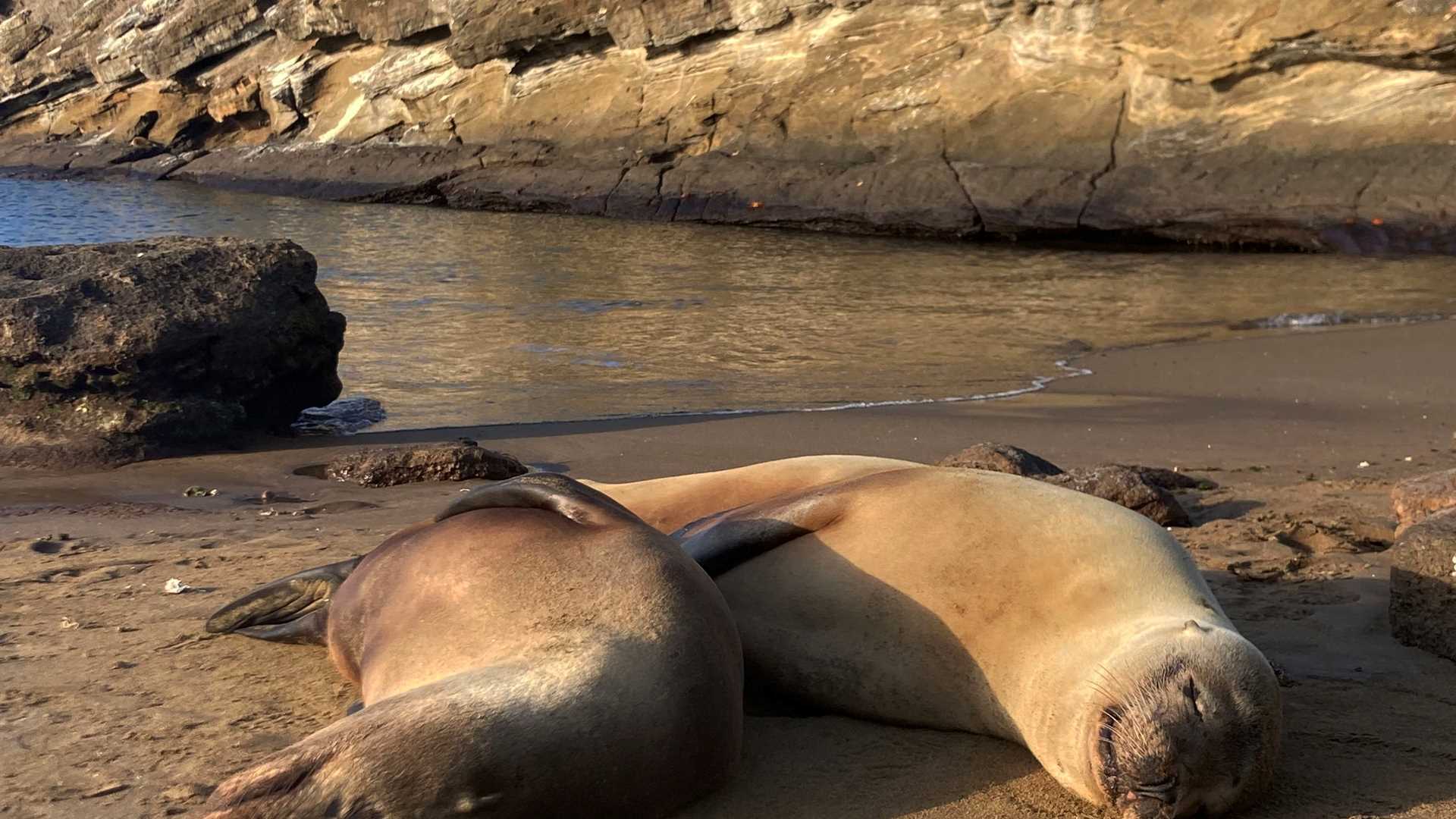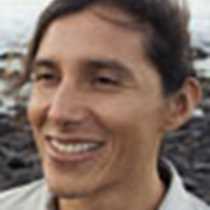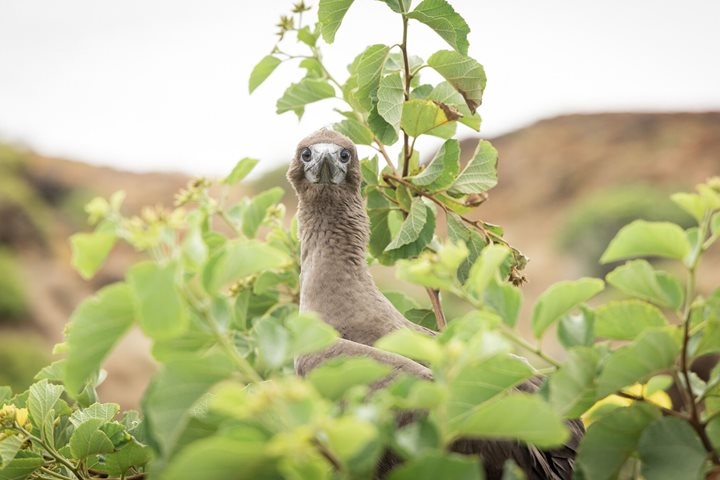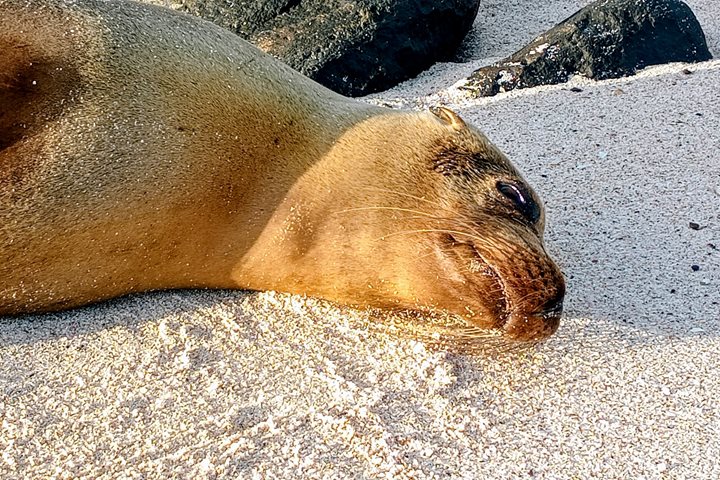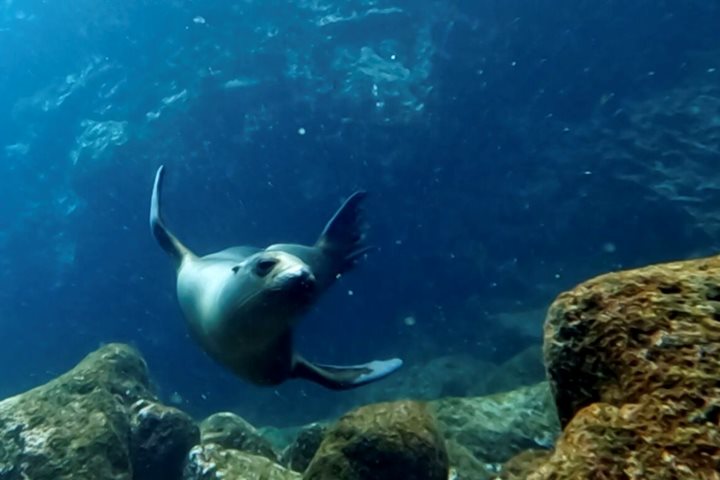Today we spent the day visiting Floreana Island. In the morning, we disembarked for an early pre-breakfast visit to Post Office Bay where we had fun learning about the days when whalers came to the Galapagos Islands and established the first post office. This old tradition has continued, and we had the chance to drop off some postcards and take others to deliver ourselves. We also had an incredible snorkeling experience in the clear waters of Champion Islet, where we observed a number of the fish species that are common to these islands, including the white tip reef shark. We ended our visit to this island with a natural history walk at Punta Cormorant, where we had the chance to see blue-footed boobies hunting. We ended the day by enjoying a delicious dinner on the sky deck onboard National Geographic Islander II.
- Daily Expedition Reports
- 13 Nov 2022
Floreana Island, 11/13/2022, National Geographic Islander II
- Aboard the National Geographic Islander II
- Galápagos
Javier Carrion, Naturalist
Javier grew up on Santa Cruz Island where his grandparents first arrived in the 1940´s. Veritable pioneers, his grandparents settled in the highlands where they found a place to raise their children.
Read MoreShare Report
Galápagos Escape: An 8-Day Voyage
VIEW ITINERARYRelated Reports
6/23/2025
Read
National Geographic Islander II
Española Island
Today we visited Española Island, the southernmost—and one of the most spectacular—of all the Galápagos Islands. Known for its unique wildlife and dramatic landscapes, Española offered us a day full of unforgettable encounters. In the morning, we landed at Gardner Bay, where a long stretch of white coral sand welcomed us. Galápagos sea lions lounged along the shore, completely unfazed by our presence. Offshore, we snorkeled in the clear waters among colorful reef fish and Pacific green sea turtles. Playful sea lions swirled around us like underwater acrobats. In the afternoon, we explored Punta Suárez, one of the best wildlife viewing sites in the entire archipelago. The trail led us through colonies of Nazca boobies and blue-footed boobies, some engaged in nesting or courtship dances. We also witnessed waved albatrosses, many sitting on eggs or gliding in the wind above the cliffs. The highlight for many was watching a pair of albatrosses perform their elaborate, synchronized courtship ritual, full of beak clacking and head swaying. As we approached the cliff’s edge, we were treated to the dramatic sight of waves crashing against the rocks and the famous blowhole, which sent bursts of water high into the air. With seabirds soaring overhead and marine iguanas sunbathing in every direction, the magic of Española was on full display.
6/22/2025
Read
National Geographic Islander II
Floreana Island
Today the guests of National Geographic Islander II had a chance to snorkel at Champion Islet, just off Floreana Island. It was a breathtaking expedition to one of the most vibrant marine ecosystems in the Galapagos. As soon as we slipped into the water, we were greeted by schools of colorful fish and playful Galapagos sea lions.

